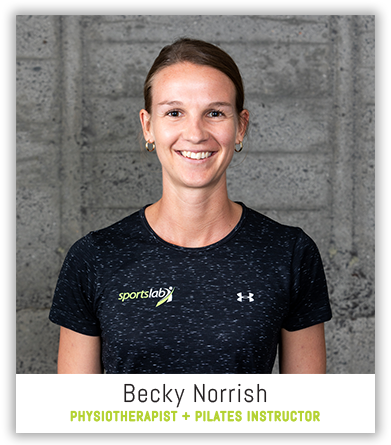Breathe Better
How well are you breathing?
It may seem like a strange question because, yes, in order for us to be alive and kicking we are all breathing, but it is the how we are breathing that we are interested in here. Believe it or not, some of us are breathing more effectively than others.
Roughly 1 in 10 people will have a breathing pattern disorder where they demonstrate abnormal breathing patterns. This can occur both with and without an underlying health condition.
In order for us to determine how well we are breathing we need to understand what is considered a normal breathing pattern at rest (note: this will be different during exercise or exertion). There are 3 key things we are looking for in an optimal breathing pattern:
Breathing in and out of the nose-
The nose is an extremely important part of normal respiration. The nose is an amazing filter, lined with tiny hairs called cilia. The cilia have many functions: they filter, humidify and warm the air before it enters the lungs. It is estimated that cilia protect our bodies against about 20 billion particles of foreign matter every day! The nose also produces a gas called nitric oxide (NO). This gas further helps to reinforce our immune system by sterilising the air before it makes its way any further into our system. It is also both a bronchodilator (opens the airways) and vasodilator (dilates the blood vessels) which enhances oxygen delivery within the body.
Fun fact: Humming has been shown to increase air flow in the sinuses, increasing NO levels by 15-20 fold.
Diaphragmatic breathing –
The diaphragm is integral to many processes within our body, from core stability, digestion and lymphatic drainage to the most important function of driving our respiration. It is a large dome-shaped muscle that contracts in a rhythmical, continuous manner and most of the time without our conscious awareness. Ideally, when we inhale, approximately 90% of the work should be generated by the diaphragm and 10% from our accessory muscles. This enables air to be drawn down into the base of our lungs where we have the most efficient gas exchange of oxygen into the blood stream and carbon dioxide out.
A slow, rhythmical respiratory rate-
At rest, adults should be breathing between 10-14 breaths per minute. Every breath should be a similar size and should feel easy.
So to summarise and simplify, normal breathing should be: breathing in and out through our nose, using our diaphragm and breathing in a nice slow, rhythmical manner. Understanding this allows us to see where this can go wrong for some of us.
Mouth breathing
Sometimes we breathe through our mouth because quite simply it is not easy or even possible to comfortably breathe through our nose. This nasal obstruction may be a structural problem or congested as a result of allergies, hay-fever or sinus issues. Other times, we can be breathing through our mouth because it is simply a habit we have picked up we may not even be aware that we are doing it, especially at night. If it is a habit, with a little persistence this can be changed. If it is an issue with the nose this usually needs to be reviewed by a health professional.
Upper chest breathing
When we end up using the accessory muscles to undergo the act of breathing, usually in place of the diaphragm, this is considered upper chest breathing. The accessory muscles are located primarily around the top of the chest, neck and shoulder region. The normal function of theses muscles is to work along side the diaphragm to assist with breathing when we are exerting ourselves and the body requires a greater volume of air into the lungs. However, at rest, it is unnecessary and in fact problematic to use these muscles to breathe. If you are an ‘upper chest breather’ you will physically see more movement of the upper chest than the abdomen. By placing one hand on the upper chest and the other hand on your tummy then watching which hand moves more is the easiest way to identify which muscles you are recruiting whilst breathing. If we don’t use our diaphragm, like any muscle in the body it can become weak, this only further exacerbates the problem of upper chest breathing.
Fast, erratic breathing rate and pattern
If our respiratory rate is faster than 15 breaths per minute at rest we are probably breathing in excess of our body’s metabolic demands, this is also known as hyperventilating. Someone who is breathing >15 breaths per minute will not always look like they are overtly hyperventilating, it can be much more subtle than we often imagine hyperventilating will look like.
There are multiple reasons for why we may start to breathe more rapidly, but commonly this can be associated with the body’s stress response and feelings of anxiety. When we are feeling stressed or anxious, the brain believes there is a potential threat and speeds up our respiratory rate in preparation for action.
There is a long list of consequences to our body’s biochemistry when we “over breathe” but to simplify, we end up with less blood flow to our brain and peripheries, oxygen being less readily available for our working tissue and a nervous system which is over active. The flow on affects that this has on both daily and sporting performance can be massive.
If you are wondering if any of the above patterns apply to you, the first step is start bringing some awareness to your own breathing. When you are sitting at your computer, sitting on the couch, waiting at the traffic lights in your car, stop and ask yourself- am I breathing through my nose or my mouth? Can I feel my abdomen or my upper chest moving more? Does my breathing feel easy, rhythmical and slow?
If you start to observe anything interesting we can review this in more depth and work towards helping you correct this back to an optimal pattern. And why is this important? Because when we breathe well we will enhance how we feel physically, mentally and emotionally.
Becky Norrish is one of our SportsLab physiotherapists. She doesn’t like to brag but we like to brag about her. She is hugely talented, likes to talk to inanimate objects, can take any challenge you throw at her, and is just an all-round good sort.


